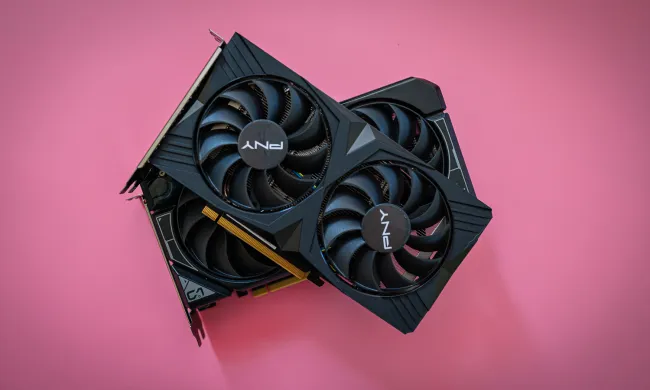Before we begin
The first step is to make sure all of the parts are present and compatible.
You’ll want to have your computer plugged in, but use the switch on the back of the power supply to shut off power to the components. If you press the power button, the computer should do nothing.

Also make sure that the graphics card you purchased is compatible with your motherboard, and that you have a PCIe slot to install it in. What kind of slot you have depends on your motherboard, so you’ll want to check your manufacturer page or information booklet to see what speed your PCIe slot is. Compatibility isn’t usually an issue, but if your computer is quite old (five years or more) it might have an Advanced Graphics Port slot instead of PCI Express. If that’s the case, you’re kind of out of luck; AGP cards are not longer produced.
If you’re trying to destroy components, static electricity is one of the easiest ways to do it. Since your computer is plugged in (with the power supply turned off) the bare metal parts of the case will be grounded. If you have a static wristband, simply clamp the other end to somewhere metal on the case.

If not, make sure you’re wearing rubber shoes and, if possible, are standing on hardwood or tile floor, as carpet will generate static, and touch the metal of the case frequently to ground yourself.

Installation
If there’s a metal guard on the back of the case, adjacent to the slot you’re installing into, remove it by removing the screw holding it in place, but set the screw aside, you’ll need it later. Many modern video cards are thick enough they require two slots.
Carefully line up the contacts at the base of the card with the slot on the motherboard, making sure the notch in the card fits over the gap in the slots. When you’re sure it’s in the right place, press down firmly on top of the card until it fits firmly on the motherboard.

Be careful here, because it should require a little bit of force to get the card to seat properly, but if it isn’t lined up correctly you risk damaging the card or the motherboard. You’ll know the card is properly seated when the back port panel is sitting flush with the back of the case.
Use the screw you previously removed to secure the back plate of the card to the rear of the case. This will keep the card in place and prevent it from moving when you unplug or plug in a cable, or if you move the PC.

Many graphics cards will require extra power from the motherboard to operate correctly. If that’s the case, you’ll see an extra 6 or 8 pin connection on the side of the card facing away from the motherboard once it’s installed. Take a cable from the power supply that’s the correct size, and plug it in to the edge.

Wrapping up
Once your card is installed, and you know your computer boots up with it in there, you still need to install drivers. You may have to leave your monitor attached to the onboard graphics, depending on the card you’ve installed.
Once the computer is on, head to the manufacturer website. Companies like AMD and Nvidia have tools to identify your card and operating system, and will automatically find the correct driver for you.
Install the driver, restart your computer, and you’ll be ready to game!



